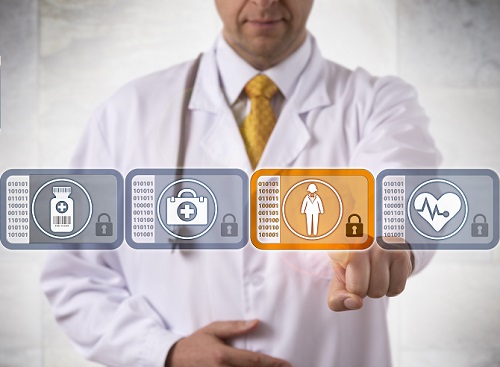What is Blockchain Technology?
Blockchain is a “single, shared, tamper-evident ledger” used to record data transfer between parties.1
For instance, data can be shared in the form of transactions such as money transfers, pictures, text, or any piece of data that can be digitally rendered.
Each piece of information or transaction is added as a “block.” Once added, these blocks cannot be altered in their sequence. The blocks form a permanent, irreversible chain of transactions or pieces of data, or a “blockchain.”1
Once recorded, the data cannot be manipulated. Specific people can be granted access to the chain of information and those people must approve of new data before the data will be added to the chain.
If someone tries to tamper with the blockchain, it becomes evident through cryptography and hashing algorithms. If someone tries to hack the chain, a new hash is inserted and the system is alerted that the data has been corrupted.2
Three Characteristic of Blockchain:
1. Shared System of Records: Eliminates the need for multiple ledgers, and possible errors and discrepancies between ledgers.
2. Permission Based: Confidential information can be shared with only the appropriate people on a “need-to-know” basis.
3. Secure: Blockchain is a permanent record. No one can delete or change a transaction or piece of data, not even the system administrator. Although it is not completely hack-proof, to date, it is the most secure form of record transfer.
What are the Applications for Healthcare?
- Blockchain’s origins began with “bitcoin,” a digital currency exchange system.3 Therefore, obviously, blockchain would work for the financial side of healthcare (billing, accounting, patient payments, and insurance credits).
- It would also have the following benefits for Electronic Health Records (EHRs):
- Instead of a physician or a hospital owning the patient’s record, the patient could own the record. The record would then move with the patient, available from physician to physician, reducing error, and following a strict chronological time-line.4
- All patient information can be recorded in one ledger, not parsed through a lifetime of doctors, dentists, pharmacists, hospitals and clinics.
- If patients were to read and approve their doctor’s notes and next steps before adding them to their record, this may have a benefit of getting the patient more willingly involved in their own care.
- Patients can trust the security of blockchain with each data point protected by privacy keys at the individual level. The patient would have full control over who can or cannot see their health record.
- Patient matching for clinical trial recruitment. 5
- Managing the pharma supply chain. Real-time data access across the entire manufacturing supply chain, from ingredients in pharmaceuticals to pharmacies fulfilling patient prescriptions.6
- Medical device security – Advanced medical devices work like computer systems, which means they can be hacked. There is a lack of understanding of the risk to the patient upon a security breach of their medical device. Blockchain would ensure more secure transfer of data between a med device and a physician’s office.7
These are just a few of the more obvious applications for blockchain in the healthcare industry. The practical use cases for blockchain in pharma and healthcare could easily overtake the financial industry where blockchain was born.
Sources:
1. Blockchain 101: Understand what blockchain is and how it works with this simple overview
2. Blockchain is unhackable but these are 5 possible vulnerabilities of “the new Internet”
3. A Brief History of Blockchain
4. Blockchain, Bitcoin And The Electronic Health Record
5. Blockchain is proving itself for real-world healthcare applications
6. Five use cases for blockchain in pharma
7. Medical Device Flaws Shine Light On Security And IoT Issues







